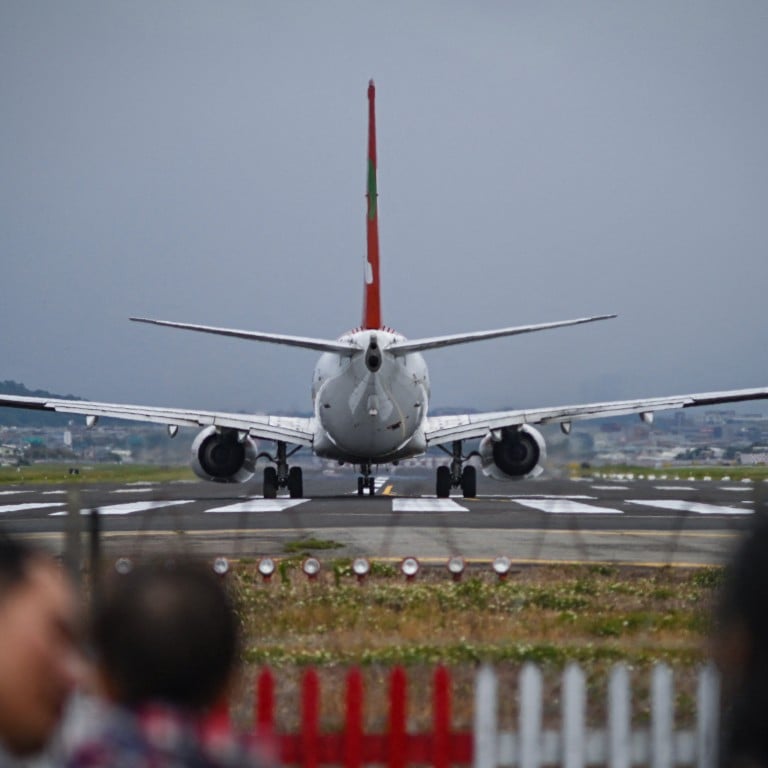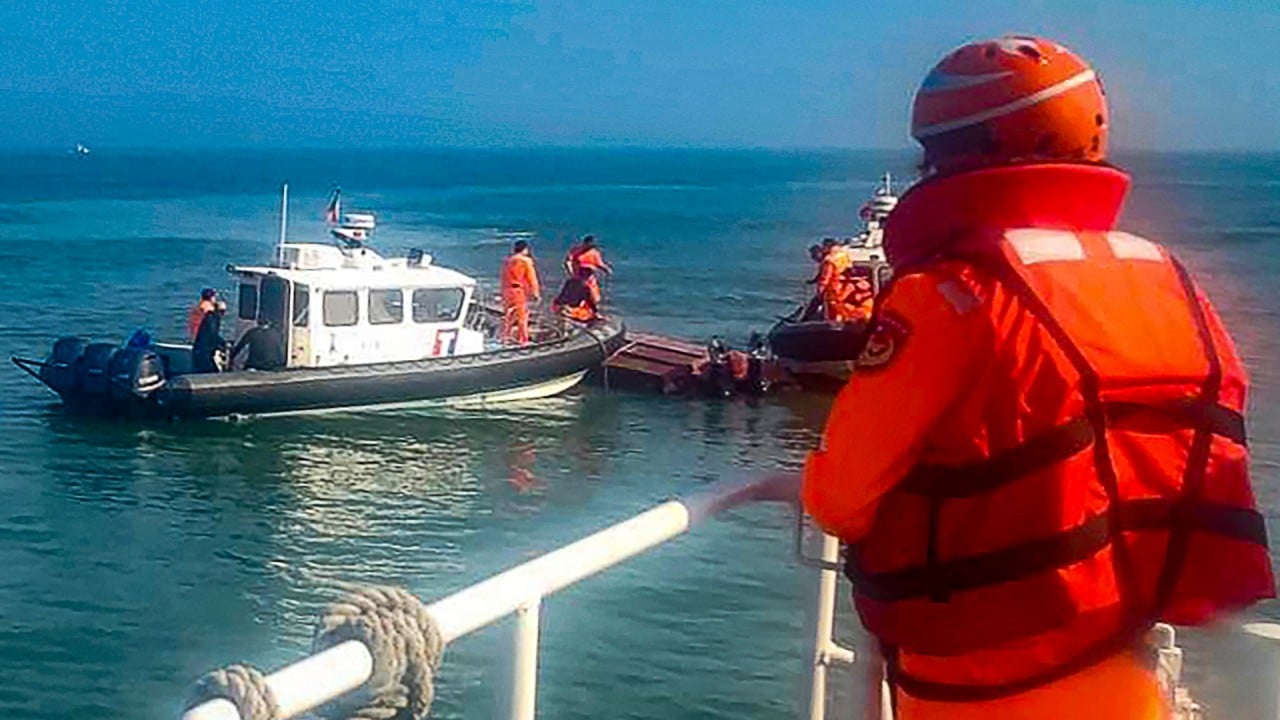
Mainland China tightens squeeze on Taiwan as new flight routes close to key dividing line add to pressure on air defences
- Beijing said it would send more civilian flights close to the Taiwan Strait’s median line after it altered one flight path earlier this month without consultation
- The move adds to the pressure on Taiwan’s air defences and could limit its scope to respond in the event of coming under attack
The two new routes are extensions of an existing controversial flight path that is just a few kilometres from the median line in the Taiwan Strait which unofficially separates the island and the Chinese mainland.
“The [routes] will be launched as soon as they are ready,” Zhu Fenglian, a spokeswoman for Beijing’s Taiwan Affairs Office, said on Wednesday.
Once launched, mainland planes could more easily stay over the line, a move analysts said would put more strain on the island’s air defences because of the need to distinguish between military and civilian planes and reduce the time available to respond to any attack.
Mainland China’s top Taiwan official pledges support for pro-unification forces
Chieh Chung, a senior analyst at the National Policy Foundation, a think tank affiliated with Taiwan’s main opposition party Kuomintang, said the M503 route was just 7.8km (4.8 miles) from the median line at its closest point.
“It means a mainland civilian plane could easily fly past the median line in a bigger turn if it is using the [new] lanes as these two routes are closest to the median line,” he said.
He said it would further squeeze the island’s air defences because military planes could follow the same routes as civilian flights and cut the time available to respond to any attack.
Shen Ming-shih, director of the Institute for National Defence and Security Research, a government think tank in Taipei, said Taiwan would be “under great pressure to keep an eye on regional air traffic as it would need to spend more time and money to monitor and warn off any military and civilian planes”.
The two new routes will be extensions of an existing flight path known as M503, which Beijing altered on February 1 without consulting the island authorities to bring it closer to the median line. Taiwan strongly protested against the move saying it increased the risks of accidents.
Zhu said work on the new routes had been gone swiftly after the adjusted M503 route had proved to operate “safely and smoothly”, with an average of 65 flights a day in the past month.
“This indicates the safety and reliability of the [M503] path,” she said, adding the adjustment not only improved cross-strait flight operations but also facilitated exchanges of personnel between the two sides.
The two sides are currently locked in a heated dispute over the death of two mainland fishermen who died after their speedboat overturned during a pursuit by the Taiwanese coastguard in waters off Taipei-controlled Quemoy, a defensive outpost also known as Kinmen.
The Taiwanese authorities said the unlicensed boat had illegally entered its “prohibited or restricted waters”, and capsized when it tried to flee from an inspection.
But Beijing insisted there was no such thing as prohibited or restricted waters around Quemoy and other Taiwan-held islets.
US congressional visit to Taiwan begins amid heightened cross-strait tensions
It also blamed the Taiwanese coastguard for the deaths, saying they had used “violent and dangerous methods”, and said it would increase the number of patrols around Quemoy and another Taiwanese outpost Matsu.
Last week, the mainland Chinese coastguard also sent six officers to board a Taiwanese tourist boat to check its route plan, certificate and crew licences.
Relations between the two sides have been in deep freeze for years, and official talks and exchanges have been suspended by Beijing since 2016, when Tsai Ing-wen, of the independence-leaning Democratic Progressive Party, was elected president and refused to accept the one-China principle.

Beijing views Taiwan as part of its territory and has not renounced the use of force to bring it under its control.
Most countries, including the United States – Taiwan’s informal ally and largest arms supplier – do not recognise the island as an independent state, but Washington is opposed to any forcible change in the status quo.


